

Cosmetic surgery is different from bariatric surgery as they deal with body contouring and not major weight loss. It involves surgical removal of fat and excess skin, thus ultimately reduce the body fat and weight in the surgical area. However, it doesn’t address the complex pathology behind obesity and so will not change the clinical course of obesity related diseases. Cosmetic surgery should not be considered as a weight loss option in morbid obesity patients unless they underwent weight loss and need further body contouring for beauty reasons. They are the best tool for removal of excess skin after 12 – 18 months of bariatric surgery when the maximum weight loss has been achieved.
Post-bariatric surgery, once a significant amount of weight is lost, excess skin and folds leftover from the period before weight loss can often be very difficult to eliminate through traditional means, and can make you dissatisfied with your appearance. Regular exercise and toning massages are required which will largely avoid skin sagging. We recommend, the cosmetologist help with toning creams and medical skin and face lift through injections which will largely avoid having a surgical intervention necessary. For those who still choose to enhance their appearance, though assessed on a regular basis, you will be eligible for surgery only after 18 months when the weight loss have reached a plateau ( NADIR). Through recent advances in all types of body contouring surgery, it is now possible for patients to have a more proportionate body. The best way to see if you are a good candidate is through a personal consultation with a cosmetic surgeon. BAROS cosmetic team works closely with you to incorporate “After-weight loss contouring” into your program.
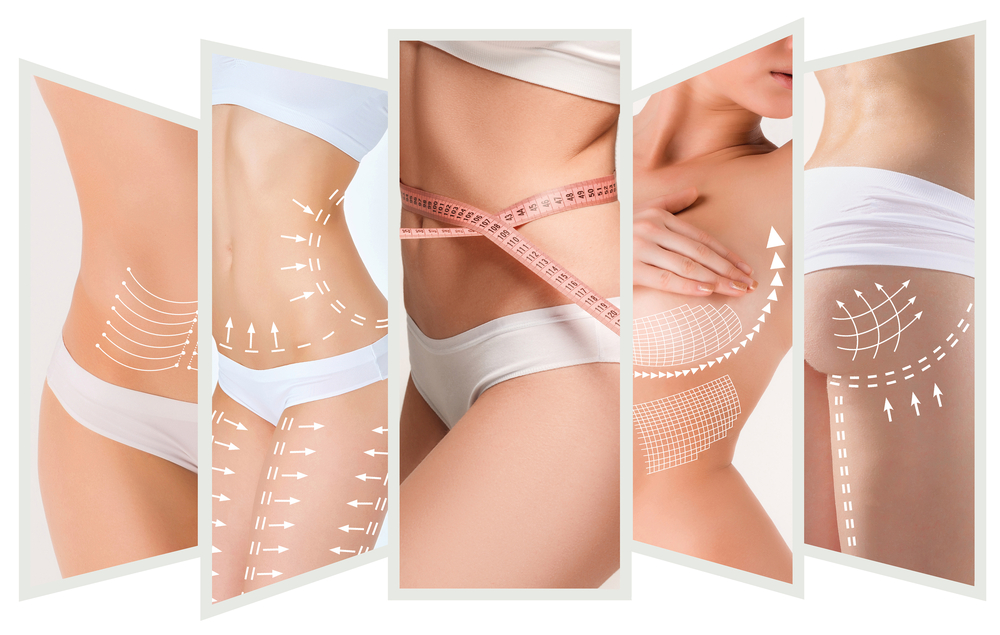
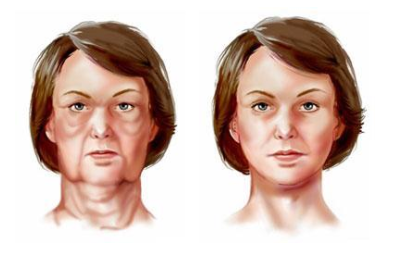
After dramatic weight loss, the face skin may become flaccid, resulting in the cheek pads dropping, and jowls forming, resulting in the loss of a defined jaw line. In addition, the neck will become loose and sagging, especially after the age of 40. We recommend regular facility exercise and massages from one month after surgery. Cosmetologist will help in the initial stages with toning creams and medical face lift through injections. Very rarely you will need surgical face lift to raise the cheek pads, corrects the jowls, and removes the loose sagging skin. The incisions are inconspicuous. They are placed in front of and behind the ears extending into the hair above and behind the ear. Whether medical or surgical, the facelift gives you a very young look which will go well with your drastic weight loss.
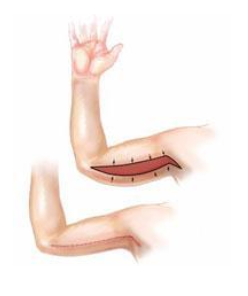
An arm lift, or otherwise known as brachioplasty, can remove the excess skin and fat deposits, leaving the upper arms with a more pleasing and youthful contour. As a person ages, upper arm skin can become loose and flabby. Plastic surgeons will consult with patients about undergoing surgery for an arm lift if they wish to tighten this skin to look and feel more youthful. In some instances, your plastic surgeon may recommend that liposuction be used alone or in conjunction with an arm lift to remove excess fat in the upper arms. For patients who have minimal upper arm fat excess, with no skin excess, liposuction alone can be effective. For patients that have some extra skin that is minimal in nature and is located near the arm pit, an improvement can be attained through a scar limited to the arm pit. For patients who present with a lot of upper arm excess, as in the case of most massive weight loss patients, tissue must be removed through a scar that runs from the elbow, through the arm pit, and onto the side of the chest.
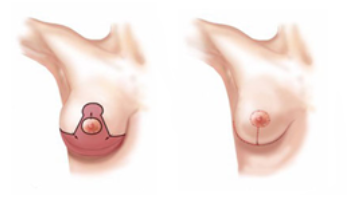
Breast lift involves the excision of excess skin and tightening of surrounding tissue with sutures to raise, support, firm and reshape sagging, flat breasts. Some patients also may require breast implants to improve the shape and size. Incisions are placed around the nipple, from the nipple to the crease under the breast, and horizontally along the breast crease. Incisions are made around your areola and on the breast crease to allow for removal of extra skin. An enlarged areola and nipples that fall below the breast crease will also be moved to a higher point on the chest. After surgery, you will be dressed with a compression garment for at least 6 weeks.
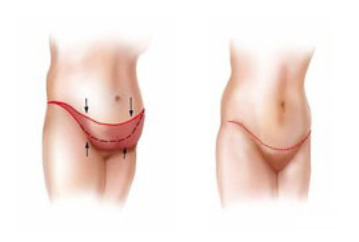
Abdominoplasty ( panniculectomy) is performed to remove the hanging abdomen (pannus), or apron of skin, from the lower abdomen below the belly button. The excess skin and fat above the belly button are not removed. However, the excess fat will be removed by making a tunnel under the skin or by liposuction. A panniculectomy is often performed on patients who are still significantly overweight but have skin irritation from their hanging skin. After surgery, these patients have less skin problems but have little improvement in the contour of their bellies. This procedure can be combined with bariatric surgery for patients with a huge apron which is causing issues to patient’s quality of life.
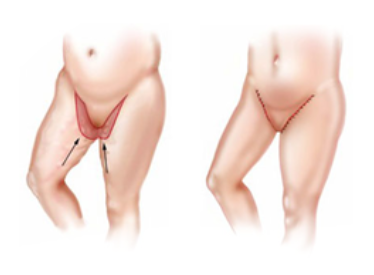
The medial thigh lift will lift and tighten the sagging skin of the inner thigh. The medial thigh skin sagging is uncommon except in patients with huge thighs. It will be very uncomfortable moving around if the patient has a sagging medial thigh as the friction between the sagged skin causes discomfort. Incisions are usually placed obliquely in the groin. The flap is incised and is elevated in the plane above the superficial fascia. There is no undermining beyond the edges of the incision. After fixation of the thigh’s deep fascia, suturing is performed in 3 planes.
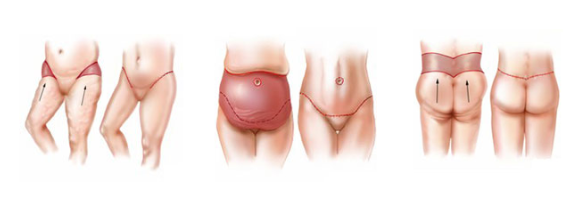
Lower Body Lift surgery involves removing a circumferential wedge of tissue. In the front the procedure involves removing the hanging apron of skin and fat and tightening up the underlying muscle wall, which is very similar to what is accomplished in a tummy tuck. To remove the excess tissues located in the back and sides the patient has to be turned in the operating room to allow for exposure of these areas. Liposuction of the thighs is often performed at the same time. The final scar has a similar shape to a “thong bikini” for most surgeons. In short the procedure involves elimination of the hanging apron, flattening of the belly, pulling up the droopy pubic region, creation of a waist, lifting the thighs, and lifting and defining the buttocks